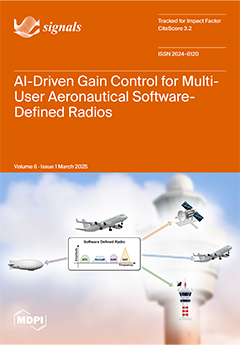We discuss determining a finite sample linear time-invariant (FS-LTI) system’s impulse response function,
in the frequency domain when the input testing function is a uniform window function with a width of
L and the output is limited to
[...] Read more.
We discuss determining a finite sample linear time-invariant (FS-LTI) system’s impulse response function,
in the frequency domain when the input testing function is a uniform window function with a width of
L and the output is limited to a finite number of effective samples,
M. Assuming that the samples beyond
M are all zeros, the corresponding infinite sample LTI (IS-LTI) system is a marginally stable system. The ratio of the discrete Fourier transforms (DFT) of the output to input of such an FS-LTI system,
, cannot be directly used to find
via inverse DFT (IDFT). Nevertheless,
contains sufficient information to determine the system’s impulse response function (IRF). In the frequency-domain approach, we zero-pad the output array to a length of
N. We present methods to recover
from
for two scenarios: (1)
and
N is a coprime of L, and (2)
. The marginal stable system discussed here is an artifact due to the zero-value assumption on unavailable samples. The IRF obtained applies to any LTI system up to the number of effective data samples,
M. In demonstrating the equivalence of
and
, we derive two interesting DFT pairs. These DFT pairs can be used to find trigonometric sums that are otherwise difficult to prove. The frequency-domain approach makes mitigating the effects of interferences and random noise easier. In an example application in radar remote sensing, we show that the frequency-domain processing method can be used to obtain finer details than the range resolution provided by the radar system’s transmitter.
Full article





